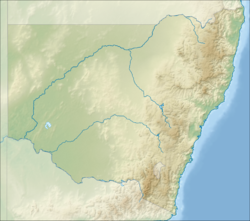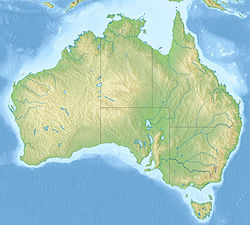Willandra Lakes Region
region in New South Wales, Australia From Wikipedia, the free encyclopedia
The Willandra Lakes Region is a World Heritage Site that covers 2,400 square kilometres in south-western New South Wales, Australia. It includes important natural and cultural features. The lakes were formed about two million years ago, but are now dry.[1] The Australian Aborigines camped around the lakes, especially in the sand dunes on the lake shores for at least 50,000 years.[1] These dunes are crescent shaped, and are called lunettes. The world's oldest cremation, of an woman more than 40,000 years ago, was found in a lunette at Lake Mungo.[1] A small section of the region is protected by the Mungo National Park. As well as Lake Mungo, there is also Lake Mulurulu which was the last lake to hold water, the Prungle lakes which have been dry for more than 20,000 years, and Lake Chibnalwood which has a 30 metre high lunette, one of the biggest in the world.[2]
| UNESCO World Heritage Site | |
|---|---|
 Part of the Willandra Lakes system:
| |
| Location | Far West, New South Wales, Australia |
| Criteria | Cultural and Natural: (iii)(viii) |
| Reference | 167 |
| Inscription | 1981 (5th Session) |
| Area | 240,000 ha (590,000 acres) |
| Coordinates | 34°S 143°E |
The Willandra Lakes Region was added to the Australian National Heritage List in May 2007.[3]

Movies
- 2003 - Journey of Man
Related pages
References
Other websites
Wikiwand - on
Seamless Wikipedia browsing. On steroids.


